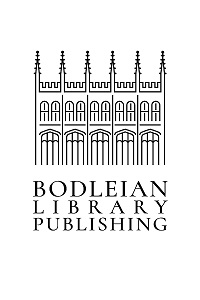The Forms of Nameless Things
Experimental Photographs by William Henry Fox Talbot
9781851245932
Distributed for Bodleian Library Publishing
The Forms of Nameless Things
Experimental Photographs by William Henry Fox Talbot
This collection features twenty-four of Fox Talbot’s most experimental photographs.
William Henry Fox Talbot, the English inventor of photography, created around 15,000 photographs in the nineteenth century, most of them attempts to produce compelling scientific documents or pictorial records of the world around him. However, among his surviving works are also prints in which an image has been obscured, obliterated, or simply failed to register. All that remains on these pieces of photographic paper are chemical stains or imprinted patterns or shapes.
Borrowing its intriguing title from a poem written by Talbot, this book features twenty-four of these prints, originally intended as test prints or creative exercises. Offered to the reader as enigmatic physical artifacts, these failed or ruined photographs are here reanimated as objects of beauty, mystery, and promise, as artworks that speak of photography’s most fundamental attributes and potentials.
An accompanying essay places these photographs in a broad historical context, revealing what relevance they have to the contemporary art of photography.
William Henry Fox Talbot, the English inventor of photography, created around 15,000 photographs in the nineteenth century, most of them attempts to produce compelling scientific documents or pictorial records of the world around him. However, among his surviving works are also prints in which an image has been obscured, obliterated, or simply failed to register. All that remains on these pieces of photographic paper are chemical stains or imprinted patterns or shapes.
Borrowing its intriguing title from a poem written by Talbot, this book features twenty-four of these prints, originally intended as test prints or creative exercises. Offered to the reader as enigmatic physical artifacts, these failed or ruined photographs are here reanimated as objects of beauty, mystery, and promise, as artworks that speak of photography’s most fundamental attributes and potentials.
An accompanying essay places these photographs in a broad historical context, revealing what relevance they have to the contemporary art of photography.
80 pages | 32 color plates | 9 1/4 x 10 1/4 | © 2022
Art: Photography
History: British and Irish History
Table of Contents
Excerpt
Borrowing its intriguing title from an 1830 poem written by William Henry Fox Talbot, the English inventor of photography, this book features a selection of twenty-four of his least familiar photographs. Made between the 1830s and 1863, these photographs are what we might today call test prints or, depending on their morphology and function, test strips. In most cases, they are experimental photographs where any image has been obscured, obliterated or simply failed to register. All that remains on his pieces of light-sensitized paper, originally intended by Talbot as creative exercises or scientific trials, or both, are chemical stains and imprinted patterns or shapes. Offered here as enigmatic physical artefacts of interest in their own right, these proto-photographs prove themselves to also be objects of beauty, mystery and promise, works that speak of photography’s most fundamental attributes and potentials. In short, it is proposed that this is a kind of photography that is all about photography itself; it is a photography that enacts ‘an erasure which allows what it obliterates to be read’.
There are about 15,000 photographs attributed to Talbot, most of them attempts on his part to produce compelling pictorial records of the world around him. Understandably, existing accounts of his career tend to reproduce the best (and best preserved) of these photographs. But Talbot also undertook a lot of private investigations of photographic chemistry during that career, and made numerous tests to perfect his various processes and techniques. In other words, to make good photographs he first had to take imaginative risks, try new things and produce a certain number of informative failures. This book showcases just a few of these marginal photographs. The selection is intended to be representative of the different kinds of photographic experiments Talbot undertook. But it also offers some glimpses of those strange beauties he thereby managed to produce, the ‘forms of nameless things’ that he once conjured within his prophetic prephotographic poem ‘The Magic Mirror’.
There are about 15,000 photographs attributed to Talbot, most of them attempts on his part to produce compelling pictorial records of the world around him. Understandably, existing accounts of his career tend to reproduce the best (and best preserved) of these photographs. But Talbot also undertook a lot of private investigations of photographic chemistry during that career, and made numerous tests to perfect his various processes and techniques. In other words, to make good photographs he first had to take imaginative risks, try new things and produce a certain number of informative failures. This book showcases just a few of these marginal photographs. The selection is intended to be representative of the different kinds of photographic experiments Talbot undertook. But it also offers some glimpses of those strange beauties he thereby managed to produce, the ‘forms of nameless things’ that he once conjured within his prophetic prephotographic poem ‘The Magic Mirror’.

